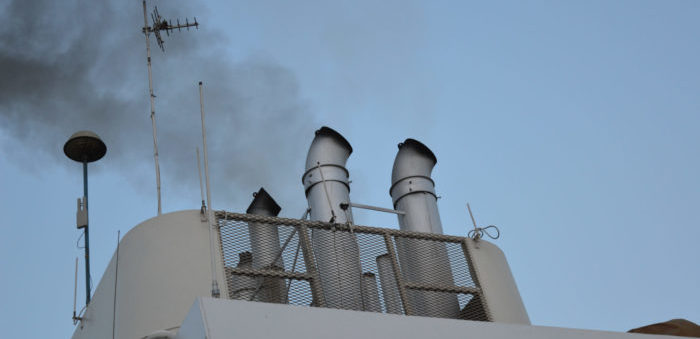UN health experts warned that nine out of ten people worldwide are affected by air pollution. Pollution is a threat to all, but especially to people from low- and middle-income countries in Asia and Africa.
Covering more than 4,300 cities in 108 countries, pollution data presents an estimated 4.2 million deaths each year caused by air pollution. More than 90% of the victims come from low- and middle-income countries in Asia and Africa, followed by others in the Eastern Mediterranean region, Europe and the Americas.
[smlsubform prepend=”GET THE SAFETY4SEA IN YOUR INBOX!” showname=false emailtxt=”” emailholder=”Enter your email address” showsubmit=true submittxt=”Submit” jsthanks=false thankyou=”Thank you for subscribing to our mailing list”]
Air pollution affects more than 40% of the world’s population – almost three billion people – a situation that the World Health Organization (WHO) Director-General described as “unacceptable”. WHO noted that despite some improvements, pollution levels are “still dangerously high in most parts of the world.”
This includes many of the world’s largest, Dr Maria Neira, WHO’s Director of the Department of Public Health, Social and Environmental Determinants of Health, said, adding that air quality levels in those cities can exceed WHO guidelines “by more than five times”.
Air pollution is attributed to inefficient energy use in human activity, such as coal-fired power plants, industry, agriculture and transport.
However, the WHO chief noted that the world is “starting to pay attention and take action” on air pollution, mentioning that this is an optimistic development:
The good news is that we are seeing more and more governments increasing commitments to monitor and reduce air pollution as well as more global action from the health sector and other sectors like transport, housing and energy.
The shipping industry has also taken action to mitigate pollution and avert a catastrophic climate change. In the recent MEPC 72, IMO agreed to reduce shipping emissions by at least 50%, compared to 2008. More specifically, MEPC 72 outlined a target to reduce GHG emissions by at least 50% by 2050 compared to 2008, while also making efforts to completely eliminate them.
The Initial Strategy identifies levels of ambition for the international shipping sector noting that technological innovation and the global introduction of alternative fuels and/or energy sources for international shipping will be integral to achieve the overall ambition. Reviews should take into account updated emission estimates, emissions reduction options for international shipping, and the reports of the Intergovernmental Panel on Climate Change (IPCC ). Levels of ambition directing the Initial Strategy are as follows:
1. carbon intensity of the ship to decline through implementation of further phases of the energy efficiency design index (EEDI) for new ships
to review with the aim to strengthen the energy efficiency design requirements for ships with the percentage improvement for each phase to be determined for each ship type, as appropriate;
2. carbon intensity of international shipping to decline
to reduce CO2 emissions per transport work, as an average across international shipping, by at least 40% by 2030, pursuing efforts towards 70% by 2050, compared to 2008; and
3. GHG emissions from international shipping to peak and decline
to peak GHG emissions from international shipping as soon as possible and to reduce the total annual GHG emissions by at least 50% by 2050 compared to 2008 whilst pursuing efforts towards phasing them out as called for in the Vision as a point on a pathway of CO2 emissions reduction consistent with the Paris Agreement temperature goals.






























































